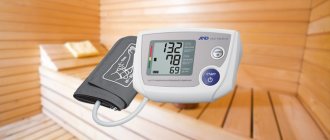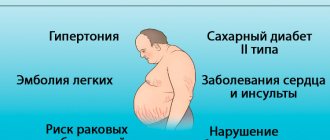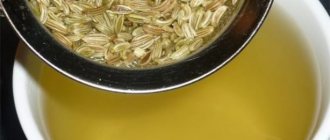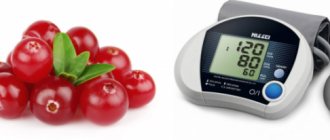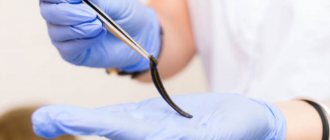Make an appointment by phone: +7 (343) 355-56-57
+7
- About the disease
- Cost of services
- Sign up
- About the disease
- Prices
- Sign up
Blood pressure (BP)
is one of the indicators of human health. Its increase is called arterial hypertension (AH). Hypertension is divided into hypertension (or true hypertension) and symptomatic hypertension (increased blood pressure due to a disease).
Normal blood pressure levels are 120/80 mm Hg. Art. Depending on the level, there are different degrees of hypertension. But the main criterion for the severity of hypertension is not so much high blood pressure as damage to target organs. They usually turn out to be those organs that have a well-developed vascular network and are well supplied with blood - the brain, retina, heart, kidneys, peripheral arteries of the lower extremities. That is why the degrees and stages of hypertension are distinguished, depending on the level of increase in blood pressure and damage to target organs, respectively.
But, regardless of the reason for the increase, hypertension always needs correction. It is necessary to distinguish between emergency, life-threatening increases in blood pressure and blood pressure that do not need urgent reduction.
An emergency, life-threatening increase in blood pressure accompanied by the following symptoms:
- intense headache, nausea, vomiting
- disturbance of consciousness
- visual impairment, hearing impairment, sudden onset
- shortness of breath, suffocation
- chest pain
- heart rhythm disturbances
- individually high blood pressure numbers recorded for the first time
- in older people. Since high blood pressure leads to the symptoms indicated in point 1
In the event of a life-threatening increase in blood pressure, you should immediately call an ambulance.
Dangerous symptoms
First aid for high blood pressure must be provided competently and immediately.
If there is no one nearby at this moment, a person who has an attack of hypertension should know how to behave in such a situation, waiting for the medical team. Often the patient simply does not notice high blood pressure. He may not feel any signs of ill health or, unknowingly, may not associate them with hypertension. This “negligent” attitude towards oneself is especially typical for people who are encountering a similar phenomenon for the first time. An asymptomatic course usually characterizes the initial stage of the disease. You can notice an increase in pressure only by measuring it. This can be done using a tonometer.
If the device shows numbers exceeding the permissible values of normal pressure (139/90), then the body has already sent the first alarm signal. Of course, this may be a one-time and minor rise, which sometimes happens to any person; it does not require medical attention. This can be checked by regularly measuring pressure over a certain period of time. Having noted episodes of periodic deviation of its indicators from the norm, one must seriously realize and accept the fact that one has hypertension.
In order not to miss the onset of hypertension, the following symptoms should not be ignored:
- headaches, which can be felt in any area, are strong and moderate, prolonged and paroxysmal;
- often pain in the head is associated with a feeling of nausea, vomiting is possible;
- the patient feels a buzzing in the ears, heaviness in the head, pulsation of blood in the temples;
- your head is spinning, the ground “goes away from under your feet,” your vision becomes dark, especially if you suddenly stand up from a sitting or lying position;
- the heart aches and hurts, you feel heat and heaviness in the chest, the pain can be squeezing;
- the heart rate becomes erratic or quickens;
- it becomes difficult to breathe, as if there is not enough air;
- fever or chills may appear, trembling in the limbs, arms and legs become numb and cold;
- blurred vision, flashing black spots appear before the eyes, difficulty focusing;
- there is pain in the eyeballs;
- possible nosebleeds;
- sleep problems;
- nervous excitement, manifested by irritation;
- apathy, loss of strength, lethargy, drowsiness.
Usually you can cope with the manifestations of hypertension on your own. Experienced hypertensive patients have a whole arsenal of proven medications for these cases.
But there are times when even they need emergency help for high blood pressure.
If the readings have increased to significant levels (30% above the usual level), you need to call an ambulance. For each person, the norm will be its own indicator; it may differ markedly from generally accepted standards (120/80).
One person will feel comfortable with a blood pressure of 135/85, while another lives with low blood pressure of 90/60 all his life. And for people with chronic hypertension, a slight increase in tonometer readings is practically the norm; the vessels have already adapted to this condition. Therefore, the concept of “high blood pressure” is quite relative. A hypotensive person will feel very bad already with readings of 140/90, and an experienced hypertensive person will call an ambulance if the pressure “jumps” to a level higher than 180/110.
The reason for providing first aid for hypertension should be the patient’s condition, and not the tonometer readings: if a person feels unwell, there is no one nearby, and he himself is not able to help himself, then an urgent need to call a doctor.
Poor health with pressure can be expressed by increased headache, vomiting, weakness bordering on fainting, the appearance of blurred vision, severe pain in the heart area. Symptoms that are typical for hypertension become pronounced, the person has a fear of death, it is difficult for him to breathe, and he becomes covered with red spots.
An emergency call to an ambulance will be needed if the medications taken and other measures to reduce blood pressure do not help, and also if the person has experienced an attack of hypertension for the first time.
A very dangerous phenomenon is a sudden sharp jump in indicators to high limits. This condition is called hypertensive crisis. In this case, first aid for high blood pressure should be provided immediately. What symptoms indicate danger:
- unbearable headache, weakness, nausea;
- arms, legs, face go numb, and often such symptoms are characteristic of one of the parts of the body: left or right;
- loss of vision.
These are signs of an incipient stroke, the outcome of which can be paralysis, coma, or death.
Here are the symptoms that precede the development of a heart attack:
- burning in the chest, not always in the heart area;
- pain extending into the arm, shoulder, or both arms;
- sometimes pain is felt in the jaw, teeth, shoulder blades or back;
- it becomes difficult to breathe;
- You may experience a feeling of a full stomach, heartburn, and your stomach begins to ache;
- interruptions in heart rhythm.
This is how acute heart failure manifests itself, which requires immediate medical attention:
- blueness of the tips of the fingers and toes, blueness in the lips;
- severe shortness of breath;
- arrhythmia;
- the appearance of pink foam at the mouth;
- coughing;
- heartache.
When complications of arterial hypertension develop, help is provided in different directions: reducing blood pressure and eliminating the symptoms of the accompanying complication. In this case, medications will be needed to support the heart muscle or relieve cerebral edema.
How to quickly lower blood pressure at home
Let’s say right away: if your health is dear to you (and we believe it is), you should consult a therapist with complaints of hypertension. Depending on your blood pressure level, your lifestyle and other factors, your doctor will select an individual prevention and treatment plan for you and, most likely, prescribe medications that will help bring your blood pressure levels to normal levels.
But if for some reason you haven’t seen a doctor yet, here are a few ways to help lower your blood pressure. Choose the one that seems most comfortable to you, or combine several to achieve maximum effect.
Breathe deeper
As HEART HEALTH Just Breathe: How to Use Breathing Exercises to Lower Blood Pressure studies show, proper deep breathing is one of the most effective ways to quickly lower blood pressure.
- Relax, close your eyes. This will help reduce stress levels - one of the main triggers of hypertension.
- Take a deep breath, counting to 5. Inhale not from your chest, but from your stomach. To control, place your hand on it - you should feel your stomach rise.
- Then exhale and count to 5 again.
Breathing deeply for 3 to 5 minutes will increase blood flow to all tissues of your body, including your limbs. Due to this, the pressure in the vessels will decrease.
You can try holding your breath after exhaling for 8-10 seconds - choose the exercise option that seems more comfortable to you.
Take a hot bath
Pour water at a temperature of about 45 °C into a basin and immerse your hands or feet in it for 10 minutes. Hot water will cause the vessels in the extremities to dilate, blood will flow to them, and blood pressure will decrease slightly.
Take a dip in cool water
Lie up to your shoulders in a 32-degree bath. The body will cool down, the body will lower the pulse rate, and this, in turn, will reduce Scientific Evidence-Based Effects of Hydrotherapy on Various Systems of the Body pressure by 11-12%. If you hold only your hands in cool water, it will not have any effect.
Drink warm mint tea
Brew a pinch of mint leaves with boiling water for 10 minutes, let cool and drink the tea in slow sips. In this form, peppermint may reduce Effects and Safety of Menthol on Blood Pressure and Metabolic Parameters in Prehypertensive and Mild Hypertensive Patients (ESMAB) blood pressure.
Make a compress with apple cider vinegar or drink vinegar water
Soak gauze in apple cider vinegar (3-9% concentration) and apply the damp cloth to your feet for 10-15 minutes. This is a popular folk method. True, there is no convincing evidence of its effectiveness today (scientists simply have not tested whether a compress can lower blood pressure). However, in some cases, vinegar can really help.
Thus, Vinegar: Medicinal Uses and Antiglycemic Effect has established that apple cider vinegar contains substances that, when taken orally, can lower blood pressure (at least it works in rats). The research has not yet been completed, but it clearly has prospects.
Therefore, if you want to use apple cider vinegar to lower your blood pressure, it is scientifically more effective to take it internally. For example, adding Using Apple Cider Vinegar to Help Lower Blood Pressure a teaspoon of liquid to a glass of water.
As a rule, table vinegar is safe in this form (exactly as it is safe when dressing salads). But keep in mind that you should avoid this method if your teeth hurt or you experience heartburn, nausea or indigestion after consuming it.
Take valerian
Or drugs based on it, for example Corvalol. Valerian is a powerful sedative that helps the body cope with stress. The heart will begin to beat more calmly, and blood pressure will decrease. Important: when taking, do not exceed the dose indicated in the instructions!
Pills and medicines
A quick way to help a person is to give him the right pills. When deciding on the choice of medications that help with hypertension, you need to remember one important rule: a sharp drop in blood pressure can only worsen the situation. It must be reduced gradually. It is good to choose exactly those drugs, the effect of which appears a short time after administration, but the blood pressure will decrease smoothly, without jerks.
For hypertension, the following groups of drugs are used:
- Blockers of calcium ions, which settle on the walls of blood vessels, increasing their volume and causing an increase in pressure.
- ACE inhibitors (angiotensin-converting enzymes) block the production of an enzyme that, by causing certain transformations of substances in the body, contributes to an increase in blood pressure in humans.
- Diuretics are drugs that remove fluid from the body. They normalize kidney function, eliminate swelling, and reduce blood pressure.
All three groups of drugs complement each other well and act more effectively when used together. They are represented by the following drugs:
- "Amlodipine", "Felodipine".
- "Captopril", "Enalapril", "Fosinopril".
- "Hydrochlorothiazide", "Indapamide".
"Amlodipine" has a soft, smooth effect. Vascular resistance decreases slowly, which helps avoid increased heart rate. The drug is also used for ischemic heart diseases. Do not use in case of low blood pressure, cardiogenic shock, myocardial infarction. The use of these tablets may cause side effects: pain in the heart or head, increased appetite, frequent urination.
"Captopril" can be used as first aid for a person with high blood pressure, as well as for the systemic treatment of hypertension. Effectively lowers blood pressure to acceptable limits, effective within an hour or an hour and a half after administration. The drug does not contribute to fluid retention in the body, so it can be taken without diuretics. It facilitates the work of the heart and improves the functioning of the kidneys.
“Hydrochlorothiazide” removes fluid, relieves swelling in cases of high blood pressure, heart failure, and renal failure. Possible side effects: nausea, diarrhea, tachycardia, hyperglycemia, dizziness, blurred vision. It is not recommended for use in cases of liver failure, impaired renal function, or severe diabetes.
Prevention
It is important not only to know what to do if your blood pressure jumps, but also to prevent an attack by adhering to the following rules:
- Stop smoking. A bad habit increases the risk of ischemia, worsens the condition of blood vessels, and prevents the body from saturating with oxygen.
- Eliminate alcohol or reduce its consumption to a minimum. A serving of strong alcoholic drink can quickly increase blood pressure by 5-10 mmHg. Art., which can be dangerous for a hypertensive patient.
- Physical inactivity goes hand in hand with high blood pressure and other disorders of the cardiovascular system. Daily physical activity helps restore blood circulation and starts metabolic processes, which helps protect against hypertension without medications. The best sports for hypertensive patients are: swimming, walking, yoga.
- Obesity is a frequent companion to hypertension and the diseases that accompany it, such as diabetes. Losing weight is a must for a person trying to prevent the development of life-threatening diseases. For a person diagnosed with arterial hypertension, losing excess weight is not a whim, but a vital necessity.
- Proper nutrition not only helps you lose a few extra pounds, but also normalizes the functioning of all organs and systems. For example, you can increase the elasticity of blood vessels and clear them of cholesterol plaques by regularly consuming olive oil and fish rich in omega-3 fatty acids. The diet should consist of vegetables, fruits, whole grain bread and cereals. You should give up fast food and sweets and use nuts, dried fruits, and honey for snacks.
- The daily routine should be followed for a person of any gender and age who wants to stay healthy for a long time. Adequate sleep of at least 7-8 hours a day, rest after physical and emotional stress - all this is an important measure to prevent problems with blood pressure.
- Timely treatment of chronic and acute diseases is mandatory. At the first malfunction of the body, you must consult a doctor, get examined and follow all the recommendations of a specialist.
- Stress today is increasingly becoming the cause of the development of hypertension in young people. It is important to slow down the pace in conquering the career ladder, stop being nervous about little things, communicating with unpleasant people, etc.
Nordic walking is a popular way to “escape” from attacks of hypertension all over the world.
Stages of emergency care
Emergency care for hypertension at home:
- You need to calm down. If self-hypnosis does not help, tinctures of valerian, motherwort, and hawthorn will help relieve a panic attack; you can take Corvalol or Validol, they will also help eliminate heart pain or arrhythmia. This must be done; increased nervous excitement intensifies the attack of hypertension. Nitroglycerin will also help relieve heart pain.
- A person needs to take a comfortable position, sit down or lie down, while the head should be raised, and on the contrary, it is better to lower the legs lower to ensure the flow of blood from the head to the legs.
- If there is trembling, the patient is shivering, his hands and feet are cold, he needs to warm up, cover himself with a blanket, and wrap his feet.
- To warm your feet, you can use a heating pad, a hot bath, put mustard plaster on your shins, or simply pour dry mustard into your socks. Heat is a good distraction procedure; it will help dilate blood vessels and force blood to drain from the vessels of the head to the peripheral ones. To relieve headaches and alleviate the general condition, you can put mustard plaster on the back of the head.
- Be sure to provide an influx of fresh air, preferably cool air, to do this, open all the vents and windows in the room.
- Remove restrictive clothing, unfasten all straps and buttons constricting your chest to make it easier to breathe.
- Take medications that lower blood pressure if this is not the first episode of high blood pressure and the pills have already been prescribed by a doctor; In this case, it is not worth experimenting with taking a new medicine. If an attack occurs for the first time, it is better to wait for a doctor, who will select medication, or consult an emergency doctor by phone.
Contraindications
Apple cider vinegar has many beneficial properties, but it may not be safe to take for some conditions.
Contraindications for use are:
- cirrhosis of the liver;
- allergy to the product;
- colitis, kidney necrosis;
- the presence of erosions in humans;
- hepatitis;
- gastritis with high acidity;
- ulcerative pathologies of the duodenum, including the stomach;
- children up to 3 years old.
When using malic acid to reduce blood pressure, you must strictly adhere to the dosage; if you increase the amount, the opposite result may occur.
Treatment of hypertension with vinegar, as with any traditional method, should be carried out after consultation with a doctor. Traditional medicine in combination with traditional medicine will help speed up the healing process and cope with the disease.
How to choose a good product
Ingesting only natural vinegar is beneficial. There are several characteristic features that can be used to distinguish it from synthetic:
- the natural product is sold only in dark glass bottles that protect the acid from exposure to sunlight;
- strength of real vinegar – 3-6%, synthetic – 9%;
- if the composition contains: acetic acid, flavoring, dye - this is a synthetic product that does not have any beneficial properties;
- In real vinegar, sediment may appear - this is normal.
For production on an industrial scale, the peel and core of apples are most often used, which somewhat reduces the quality of the product.


